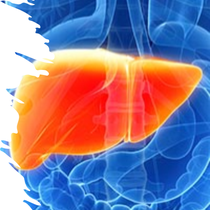Online CE Programs

Acromegaly: Improving Timely Diagnosis, Assessment, and Treatment
Acromegaly is a rare, chronic, progressive disease characterized by an excess secretion of growth hormone (GH) and increased circulating insulin-like growth factor 1 (IGF-1) concentrations. It is caused by a pituitary adenoma in most cases. The clinical diagnosis, based on symptoms related to GH excess, is often delayed due to the insidious nature of the disease. Consequently, patients often have established systemic complications at diagnosis with increased morbidity and premature mortality.

Biosimilars in Osteoporosis: Highlights from the ASBMR
Biosimilars are large, complex molecules made from living organisms that are highly similar to their reference biologic and are administered in the same way, with the same strength and dosage, and clinically meaningful differences in safety, purity, and potency.
Incorporating biosimilars into the management of osteoporosis, known as a silent chronic disease responsible for 13 million fragility fractures worldwide, provide a more affordable version of osteoporosis medication, and an alternative to conventional osteoporosis agents.
During this activity, presented as a satellite symposium at the recent ASBMR Annual Meeting, experts will discuss the efficacy and safety of biosimilars, and how these agents are changing the treatment landscape in osteoporosis management.

Highlights from ACMG: Metabolic Disorders: Strategies to Improve Management of Porphyrias + Porphyria-like Attacks
Join us for highlights from the American College of Medical Genetics and Genomics Annual Meeting! Patients with acute porphyrias, characterized by an enzymatic defect in the heme biosynthetic pathway, often present with debilitating, life-threatening attacks. To improve an understanding of AHP and to better differentiate from other disorders that mimic symptoms associated with AHP, a broad differential diagnosis of the main acute presentations of acute porphyrias (including abdominal pain, neuropathy, psychosis) will be reviewed, including other diseases with similar signs such as Guillain-Barre Syndrome and Multiple Sclerosis. Disorders that do have real porphyria-like attacks as a manifestation (i.e., tyrosinemia, lead poisoning) will be addressed, with recommended strategies to personalize patient treatment.

Highlights from SIMD: Distinguishing Porphyrias from other Diseases with Porphyria-like Attacks
Acute hepatic porphyrias (AHP) symptoms often resemble other diseases in the gastrointestinal, gynecological, and neurological areas and are characterized by intensely painful attacks that can be life-threatening if incorrectly diagnosed. When correctly diagnosed, treatment may vary among clinicians who manage patients with these disorders. To close these practice gaps, join us for hightlights from the the Society for Inherited Metabolic Disorders Annual Meeting as our faculty of AHP experts discuss treatment strategies and provide recommendations using real patient cases seen in clinical practice.
